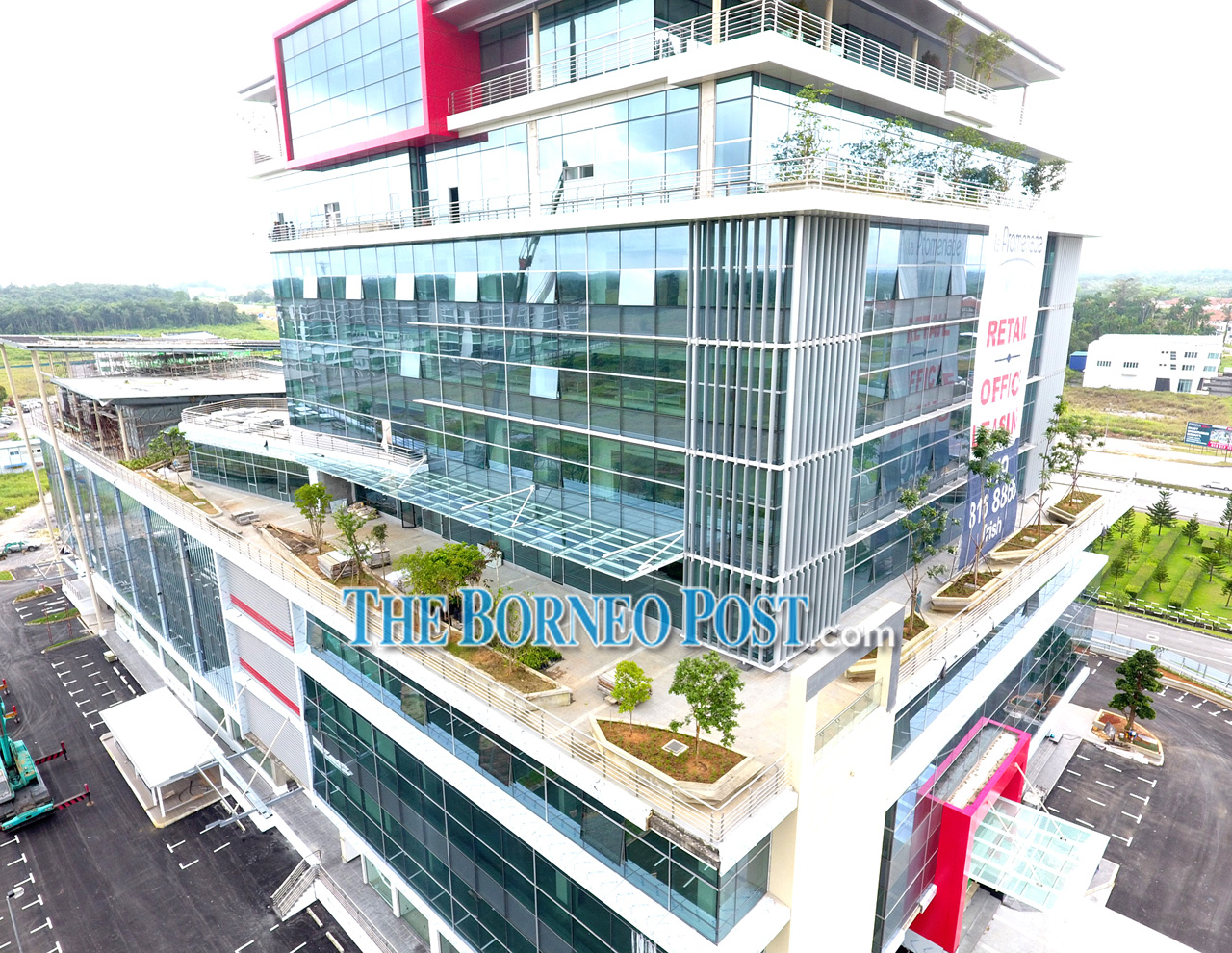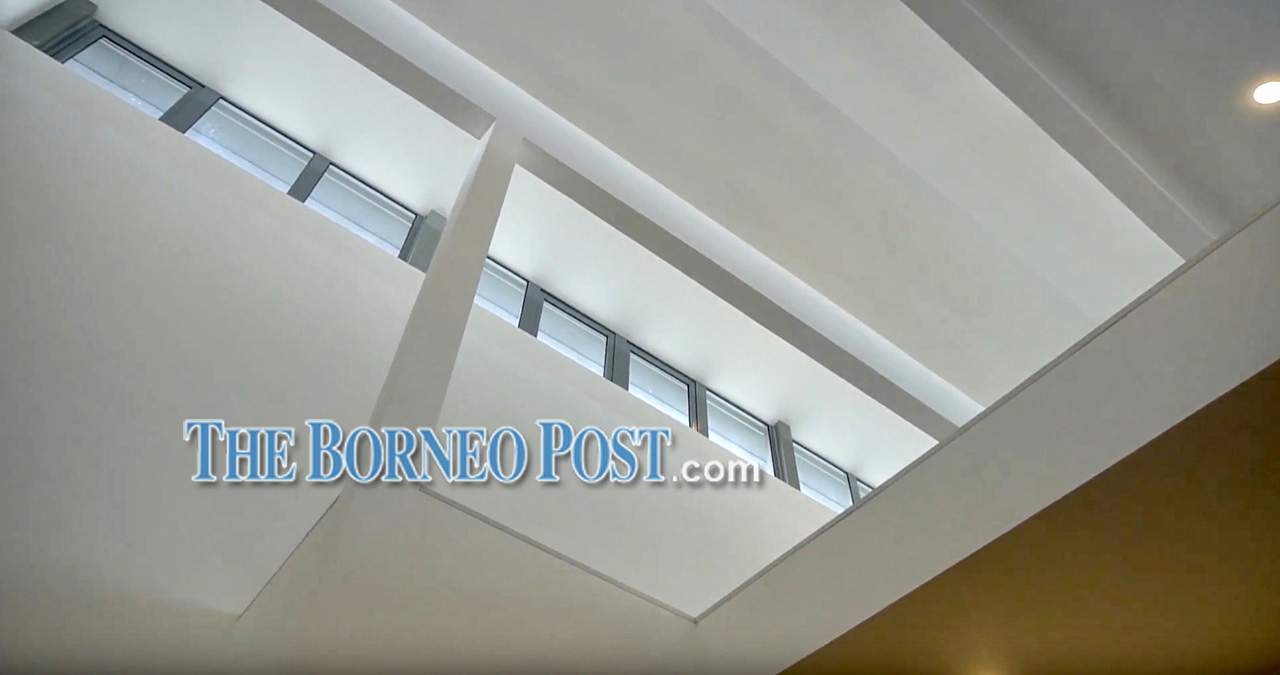
HSL Tower is aiming for GBI certification.
WHILE the world today is battling environmental issues such as global warming and climate change, some are thinking about playing a role to mitigate the greenhouse effect that is heating up the planet.
Some studies show climate change is precipitated by the energy-choices people make, resulting in the depletion of the ozone, a major contributor to global warming.
As a result, people are reexamining their energy choices by switching essentially to accessible renewable resources such as solar power. In fact, solar panels are used worldwide for heating water in homes and buildings.
It may sound like a grand scheme but to mitigate climate change, green buildings loom as one of the solutions.
Green buildings are designed to save energy and resources, recycle materials, and minimise the emission of toxic substances over the long-term.
To architects, it’s the practice of creating buildings or structures via environmentally responsible and resource-efficient processes throughout a building’s lifecycle — from siting, design, construction, and operation to maintenance, renovation, and deconstruction.

David Ong
It goes back to the traditional design of a building and a lot of existing building designs are for air-cond loading, according to David Ong, architect principal of David Ong Architect, one of Sarawak’s best-known specialist design firms and a key contributors to the Green Building Index (GBI).
“This means the houses or buildings have minimal openings. There is no cross-ventilation to keep the cool air from the air conditioners in while the glass windows are tinted to make it cooler inside.
“You find this especially so in terraced houses, where the interior will be dark and the air stuffy. When people reach home, they will automatically switch on the lights and the air-cond, which rakes up the electricity bill.
“So it all boils down to the design of the building,” he explained.
Air-cond loading
According to Ong, air-cond loading means you take the hottest day in a year and you meet that condition. If the overall design of the building can reduce heat from entering, it will bring down the tonnage of the air-cond — which will save money.
An alternative to relying heavily on air conditioning to reduce heat in a building is using double glazing or insulated glass, comprising two or more glass window panes, separated by a vacuum or gas-filled space, to reduce heat transfer across a part of the building envelope.
Besides, homeowners can use a rain-harvesting system for cleaning needs to save water.
“This is because Sarawak does get hit by haze, and back in 2006, there was water rationing due to the dry spell.
“The first things people look for to collect water are huge bins and at that time, they realised rainwater is important.
“Also, it’s an environmental issue. Don’t blame the drain if there is flooding during heavy rain. This is because the inflow is greater than the outflow and the water may subside in half an hour or so.
“Thus, if we all do rainwater-harvesting, we’ll slow the flow of water to the main drain,” he said.
On solar water heaters, he pointed out that these would contribute to 10 per cent of the electricity consumption.
He noted that to rely on solar power for the entire home’s electricity needs, a lot of solar panels would be required plus a battery to store the harvested energy for use at night, otherwise the energy generated would be wasted.
“You also need space for a special room to store the battery — and the battery is hazardous. The battery is probably more expensive than the panel, so it’s not advisable.”
Wooden house design
According to TGME Consultancy Sdn Bhd director Ling Ching Poh, it’s possible to transform existing residential areas by looking at how they can be improved to become green buildings and minimise energy consumption.

Dr Ling Chin Poh
The best greenhouse is the wooden village house design, which he opines is the “greenest ever”.
The village house uses timber planks. There is no concrete below and the roof has no insulation. The house stands on stilts and the gaps in the wooden floor planks are good for air circulation.
There were no tar sealed roads in the surrounding areas before, yet the houses were very cool. Back then, there was also no air conditioning.
Devices that can help to reduce energy consumption are LED lighting, motion sensors for lights, and low volatile organic compound (VOC) furniture.
Most furniture is manufactured with products containing VOCs — chemicals found in glues, plywood, upholstery, paints, solvents, and foam.
According to Ting, these chemicals do not remain in the products but are released over time into the atmosphere through a process called off-gassing.
“Rainwater harvesting is recommended as well, as the water collected can be used for irrigating gardens, washing rubbish bin areas, and cleaning.
“The local councils can use the water to clean the streets. But this water must be used regularly as stale water is not good,” he said.
Promoting sustainability
The introduction of the Green Building Index (GBI) in Malaysia, the industry’s recognised green rating tool for buildings, is aimed at promoting sustainability in the built-up environment and raising awareness among industry players.
It is also to encourage putting up more green buildings and get more developers and industry players on board. The government has provided incentives in the form of an investment tax allowance for purchasing green technology assets and income tax exemption for using green technology services and systems.
The incentives, announced in Budget 2014, covered a broader scope of green technology activities in areas of energy, transportation, building, waste management, and supporting services activities.
They also facilitated the transition of expired tax incentives (by Dec 31, 2015), relating to renewable energy (RE) and energy efficiency (EE) projects under the Promotion of Investment Act (PIA), 1986.
First, there is the Investment Tax Allowance (ITA) of 100 per cent for qualifying capital expenditure incurred on a green technology project.
The allowance can be offset against 70 per cent of statutory income in the year of assessment. Allowances not utilised can be carried forward until they are fully absorbed.
Green technology project related to renewable energy, energy efficiency, green building, green data centre, and waste management can qualify for this tax incentive.
Secondly, there is an income tax exemption of 100 per cent for statutory income from the year of assessment 2013 until the year of assessment 2020.
Green technology services related to renewable energy, energy efficiency, electric vehicle (EV), green building, green data centre, green certification and verification, and green township can qualify for this tax incentive.
And lastly, the Tax Incentive for Purchase of Green Technology Assets, which is an Investment Tax Allowance (ITA) of 100 per cent for qualifying capital expenditure incurred on green technology assets.
The allowance can be offset against 70 per cent of statutory income in the year of assessment. Un-utilised allowances can be carried forward until they are fully absorbed.
Ling said the incentives, initially for up to the year of assessment 2020, have been extended to 2023.
“The GBI rating tool allows developers and building owners to design and build green sustainable buildings that can provide energy and water savings, a healthier indoor environment, better connectivity to public transport, adoption of recycling and greenery for their projects and reduced impact on the environment.”
Initial scepticism
According to Ong, when the GBI was first introduced, people were sceptical about how it would reduce energy consumption.
In Sarawak, the uptake was a bit slower, and the first building to undergo design assessment was the Sarawak Energy Berhad (SEB) headquarters in 2013.
“First, they have to register the Green Building process with the GBI panel before getting a provisional certificate to assess the design of the building.
“After the project is completed, they will have to complete the Circular Building Assessment (CBA) that meets the design requirements and green features.
“This final certificate is valid for three years and certification has to be renewed to sustain the building’s performance.
“The design and compliance are two different categories of Green Building. The actual construction meets the design requirement,” he explained.

Windows provide plenty of natural light and ventilation.
Design assessment
There are two types of design assessment — active design and passive design.
Active design is for services like air-con, lighting and some control designs while passive design is for architectural inputs and selection of materials with the idea to minimise heat coming through the building.
Buildings will be awarded the GBI rating based on six key criteria — Energy Efficiency (35 points), Indoor Environmental Quality (21 points), Sustainable Site Planning and Management (16 points), Materials and Resources (11 points), Water Efficiency (10 points) and Innovation (seven points).
According to Ong, to achieve certification, the building must have a minimum 50 per cent rating.
A silver rating is 66 to 75 per cent, a gold rating is 76 to 85 per cent, while 86 per cent and above is platinum.
The upcoming building going for GBI certification is the HSL Tower at La Promenade, featuring state-of-the-art green architecture and facilities.
Ong said there is a different rating tool for improving existing buildings to Green Building status, which should be ready soon.
“The Green Building does consume less energy. The average is 200 kilowatt per metre square. For GBI, it should reduce to below 150 (watt per metre square). SEB was below 90 (watt per metre square).
“This is compensated by the solar energy generated. The reduction means savings to the business operators as they pay less for electricity.”
He noted that the price of solar panels now is very cheap — about RM5,000 per kilowatt system — from RM50,000 previously.
“The panels also come with a 20-year warranty and this is something to think about.”
He added that it would not cost much for an existing building to upgrade its system to Green Building standard as the company could claim green costs.
Ong is also the master planner for Precinct Grande, the third residential development within La Promenade, based on the Green Building concept.
The houses incorporate Green Building features such as skylights for lighting and windows built into the jacked roofs of the terrace houses to allow light in through the ceiling, giving plenty of natural light and ventilation.
“This is different from the conventional intermediate terraced houses where the interior is dark as only the front and back areas get light from outside, hence the need to turn on the lights,” he pointed out.
Ong hoped to see more Green Building residential areas being developed.
